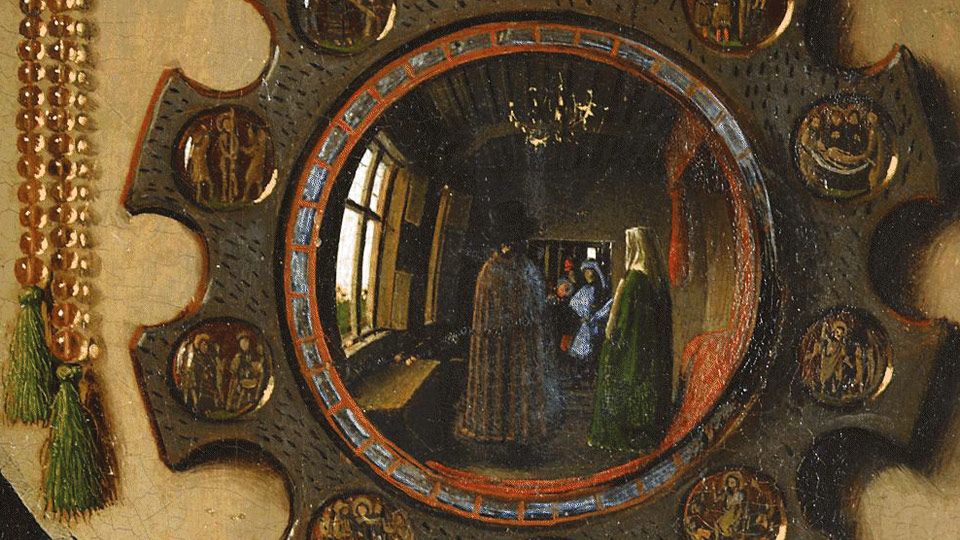What are migraines with visual aura?
16/12/2025

05/05/2025
We return to the subject of distorted images to focus on a type different from that classically produced by distortion of linear perspective. This other type is based on mirror reflection, or catoptric anamorphosis.
By anamorphosis we mean the deformation (and restoration) of an image through projection or distorted perspective. The earliest examples are found in drawing and painting—generally with the aim of concealing or emphasising a certain message—although, as we have seen, such techniques today extend into industrial uses, from Cinemascope to packaging and road signage. One of the most curious forms of anamorphosis uses a special mirror to reconstruct the “normal” image. The ability of mirrors to deform, expand or compress images—something well known to any child after a visit to a funfair—could hardly go unnoticed by the artist’s eye. This becomes evident from the moment realism begins to supplant medieval symbolism. Perhaps the most famous example is the convex mirror in the background of Jan van Eyck’s small painting “The Arnolfini Portrait”, which, with hyper-photographic detail, captures the entire scene from behind.
From the Baroque period onwards, the first “anamorphoscopes” appeared—an invention apparently of Chinese origin, which would have reached Europe via Venetian traders—alongside treatises describing techniques for constructing oblique or catoptric anamorphoses. Of these, the most common type involves a reflective cylindrical surface that must be placed at a specific point on the anamorphic drawing or painting. While the flat image is unrecognisable when viewed directly, it is restored to its normal form in the mirror’s reflection, which can be seen from different angles. This device was used to discreetly disseminate caricatures and scenes of witchcraft, scatology or erotica.
Prof. Rafael I. Barraquer, medical director of the Barraquer Ophthalmology Centre